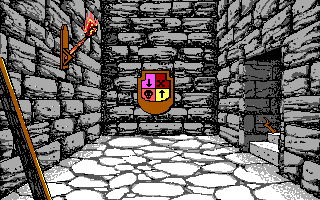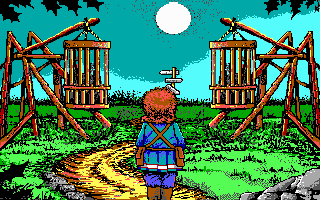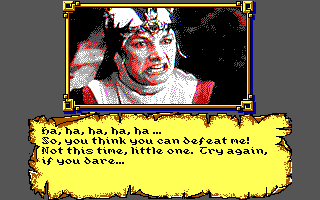Willow: The Computer Game
Game Review
Game: Willow
Rating: D
Not many people remember the movie Willow these days it seems, and perhaps for good reason; in retrospect, it was rather mediocre. Despite some big names associated, it was met with mixed reviews when it came out and time hasn't helped its cause. Still, at the time, I was young and absolutely adored the film regardless of any shortcomings; so when Mindscape came out with their computer adaptation of the movie I immediately plunked down my hard earned cash. Unfortunately, while the movie may had some redeeming qualities even if it's not a cinematic masterpiece (it does have a cult following), the game does not; I bought the IBM PC version, but that doesn't matter too much. All of the versions have, more or less, the same gameplay and same faults.

Let's start out with the design decisions. I found the most frustrating aspect to be how randomness enters into your chances of success. Many of the sequences in the game have a random element to them in the form of mazes with unexpected dead ends and spells to be cast that vary and can cause instant death if cast wrong. The problem here is there's really nothing you can do about this as a player; it's purely a guessing game with the solution discovered by trial and error. No clues are provided, so simple chance can end the game or allow you to continue. To win, you need to play all seven mini-games in order; you begin with eight lives, which while it sounds generous isn't as many as you think. In several sequences you need to make decisions with no opportunity of correcting mistakes; in the dungeons at the beginning of the game a wrong move has you locked in the dungeon and a life lost. There's no visual cues; one would think looking through an open door before walking into the room would be possible, but alas, it isn't. At the crossroads, you literally have a 50/50 chance of making the right choice; if you're unlucky, a life is lost! In the ice caverns, there's no clues or indication of what the correct path is; trial and error only will get you to the end. The overall premise isn't bad, the 3D view of the dungeon and ice caverns, for example, could be fun with modern technology and where some sort of hint could prevent instant death, but what the game actually presents is nothing more than a guessing game where winning feels more like luck than skill. To actually win the full game, practicing individual sequences was necessary; the game didn't reset the mazes or spells each time you attempted a sequence so it was possible to figure out the solution by repeating a section over over again. The solution was the same for both practice and the full game, and the solution wasn't altered unless players selected the option to reset the game. To get through all sections you would, realistically, have to keep practicing until you stumbled across the solution and then hopefully remember it (or write it down...) to complete the puzzle in the full game.

Graphically, the game is ok. Everything is clear enough to be playable, the detail is decent enough, but there are some limitations. The PC versions supports, in the best mode, 16 colors with either EGA or Tandy modes. The color isn't always great, but with the fixed 16 RGBi colors available it's not the worst either. The Atari ST and Amiga versions are more or less based on the IBM EGA graphics; despite the better color capabilities of these computers when compared with EGA, they use the same artwork but with a slightly modified palette. In one respect, the EGA version actually looks better; the light red color is used as a closest to skin color shade available. For the ST and Amiga, this is replaced with a much redder version that looks quite aweful. I'm not sure why this decision was made, much better choices were possible! The Amiga version does use the system's extra colors, however, to display more detailed versions of the photos making it easily the best platform the game was released on; but otherwise, all of the other in-game graphics are the same as the other versions. The 4-color CGA version might not be pretty, but surprisingly it does remain clear enough that the limited colors are rarely an issue (one exception is during battle where the characters disappear into the background a little too much). Of course, the Commodore 64 version is blockier and no matter what version you have, the animation is choppy.
Soundwise, however, this game is especially bad! An IBM PC (and any compatible) with just the PC Speaker as sound hardware doesn't provide much opportunity for amazing sound and music. With these hardware limitations, it's hard to fault an unimpressive result! The theme song is there, a few sound effects are present, and not much else which was common for the PC sound era. More could have been done, but oh well, it's just the PC speaker! Where this game really dissapoints is with the more advanced systems like the Amiga and Atari ST (and even the Commodore 64's SID chip). The music on these systems is still just single voice; no harmony or varied instrumentation. The tonal quality is much better than the PC speaker provides and is a little more pleasing and less harsh on the ears than the square wave a PC gives you, but considering what these computers are truly capable of the result is disappointing at best. Sound effects are still limited, and again while better than the PC version, completely fail to show off what could be done. Oh well...at least there's a volume control!
